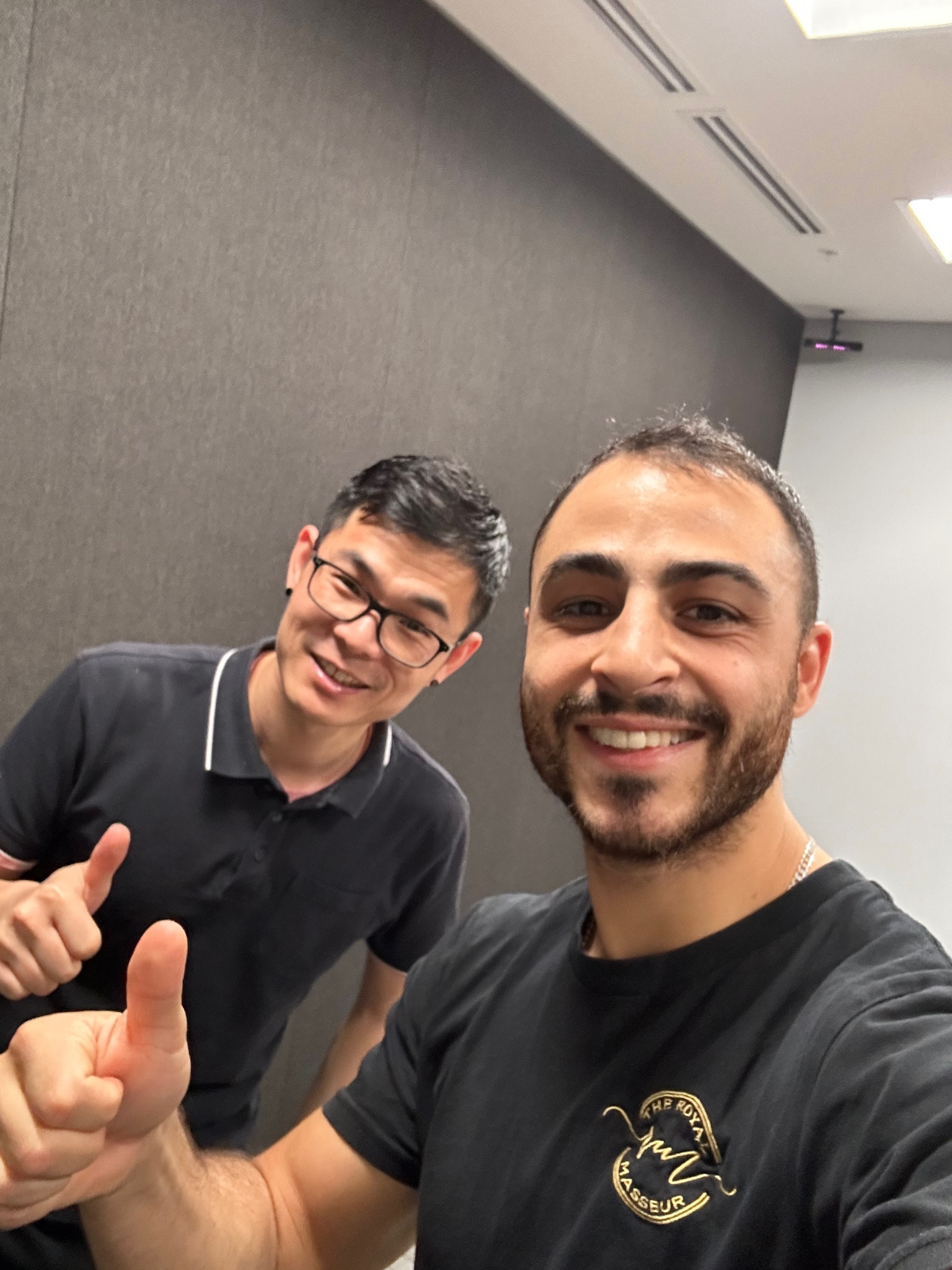
Partnering with wellness professionals to design RUOK?Day massage workshops transforms workplace wellness by fostering mental health conversations, reducing stress and boosting employee engagement. This guide shows how RUOK?Day’s mission aligns with on-site corporate massage events, explains stress-relief mechanisms and productivity gains. By the end, you’ll understand how to collaborate with qualified therapists, plan engaging formats, track ROI and embed RUOK?Day massage workshops into a lasting corporate wellness strategy.
What Is RUOK?Day and Why Is It Important for Workplace Wellness?
RUOK?Day is an annual mental health initiative encouraging people to ask, “Are you OK?” and spark genuine conversations. By prompting meaningful check-ins, this event reduces social barriers and promotes emotional support among colleagues, which directly enhances workplace well-being. For example, inviting employees to participate in brief dialogue stations can lower isolation and pave the way for trust and resiliency.
| Element | Role | Impact |
|---|---|---|
| RUOK?Day | Awareness Catalyst | Fosters open mental health conversations |
| Conversation Prompts | Engagement Tool | Encourages peer support and empathy |
| Check-In Stations | Interaction Hub | Reduces stigma and increases connectedness |
By combining structured prompts with supportive environments, RUOK?Day lays the foundation for targeted wellness activities like massage workshops that reinforce its core objective of mental health awareness.
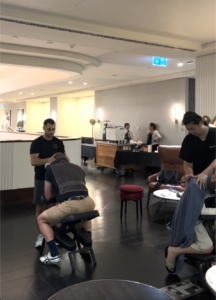
How Does RUOK?Day Promote Mental Health Awareness in the Workplace?
RUOK?Day promotes mental health awareness by creating dedicated spaces for employees to share feelings and access support resources. It leverages peer-to-peer check-ins, on-site seminars and multimedia campaigns to educate staff on signs of distress and coping strategies. Common practices include guided group discussions where colleagues learn active listening techniques, which builds a culture of empathy and early intervention. Establishing these dialogues naturally leads to supportive interventions like massage moments that further normalise self-care.
What Are the Best RUOK?Day Activities to Foster Employee Well-being?
RUOK?Day activities thrive when they balance informational and experiential elements that engage diverse workforces.
- Hosting on-site massage stations provides tangible stress relief while signalling organisational care.
- Facilitating peer discussion circles empowers employees to speak candidly about mental health.
- Incorporating guided mindfulness or breathing breaks helps regulate emotional responses and focus.
These interactive options equip teams with practical self-care tools and establish a supportive workplace culture that on-site massage can reinforce.
How Can Corporate Massage Support RUOK?Day’s Mental Health Goals?
Corporate massage supports RUOK?Day’s mental health goals by offering a hands-on relaxation experience that complements conversation-based initiatives. When a certified therapist delivers on-site chair massages, muscle tension and cortisol levels decrease, making staff more receptive to emotional dialogue. This physical release reduces anxiety and signals to employees that their well-being is a priority, which deepens the impact of RUOK?Day’s message.
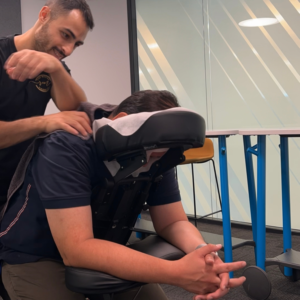
How Do Corporate Wellness Massage Programs Reduce Workplace Stress?
Corporate wellness massage programs reduce workplace stress by integrating therapeutic touch into the employee experience, which triggers physiological relaxation responses. When trained and experienced therapists deliver targeted techniques such as trigger-point release and gentle stretching, staff experience lowered cortisol levels, improved circulation and heightened endorphin production.
| Program | Mechanism | Outcome |
|---|---|---|
| On-site Chair Massage | Muscle Tension Release | Immediate relaxation and reduced pain |
| Mobile Table Massage | Deep Tissue Techniques | Enhanced flexibility and stress relief |
| Micro-Wellness Breaks | Guided Self-Massage | Empowered self-care and stress management |
By embedding massage into routine wellness offerings, organisations can sustainably decrease stress levels and foster a more resilient workforce.
What Are the Key Benefits of On-Site Massage for Employee Well-being?
On-site massage delivers multiple advantages that strengthen overall employee well-being:
- Immediate Stress Reduction – Massage lowers cortisol and triggers relaxation within minutes.
- Enhanced Morale – Demonstrating care through wellness perks boosts job satisfaction.
- Pain Relief and Posture Improvement – Regular sessions alleviate musculoskeletal discomfort.
- Mental Clarity – Relaxed muscles and reduced anxiety improve focus and decision-making.
These benefits combine to create a supportive environment where employees feel valued, energised, and motivated.
How Does Stress Reduction Improve Employee Productivity and Morale?
Stress reduction improves productivity and morale by restoring cognitive bandwidth and fostering positive workplace emotions. Lower cortisol levels enhance executive function, enabling employees to complete tasks more efficiently. As tension decreases, job satisfaction climbs and absenteeism drops, which reinforces team cohesion and drives higher performance. When a massage program consistently mitigates stress, staff report feeling more engaged and motivated.
What Types of Workplace Massage Workshops Are Most Effective?
Workplace massage workshops succeed when they match workplace constraints and employee preferences:
- Chair Massage Sessions – Fast, seated treatments at workstations fit tight schedules.
- Table Massage Experiences – Deeper, table-based sessions offer more intensive relief.
- Guided Self-Massage Workshops – Teach employees simple techniques for personal stress management.
Selecting the right format ensures broad participation and maximises the stress-relief impact of corporate massage initiatives.
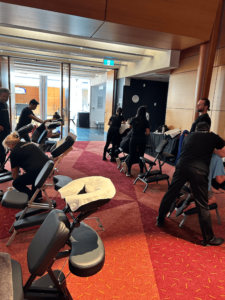
How Can Businesses Partner with Wellness Professionals for RUOK?Day Workshops?
Businesses can partner with wellness professionals by establishing clear collaboration goals, defining service scopes and co-creating tailored event experiences. Engaging certified massage therapists as event partners ensures high standards, consistent delivery and alignment with RUOK?Day objectives. This collaboration mechanism leverages specialised expertise while freeing internal teams to focus on logistics and communication.
What Criteria Should You Use to Select Qualified Massage Therapists?
Choosing the right therapists requires attention to professional credentials and corporate experience:
- Certification and Licensing – Verify recognised training and active professional registration.
- Corporate Event Experience – Prioritise practitioners comfortable in office environments.
- Liability Insurance – Ensure coverage for on-site services to manage risk.
- References and Reviews – Seek feedback from past corporate clients to confirm quality.
Applying these criteria safeguards participant safety and maintains program credibility.
What Are Effective Collaboration Models for Corporate Wellness Programs?
Effective collaboration models define roles and responsibilities to optimise partnership outcomes:
- Full-Service Outsourcing where an external wellness provider handles planning, staffing, and execution.
- Co-Facilitation Arrangements pairing internal HR coordinators with freelance therapists for shared delivery.
- Referral Networks that connect companies with a vetted pool of wellness experts on demand.
Choosing the right model balances control, cost and convenience to meet organisational needs.
How Do Wellness Professionals Enhance the Impact of RUOK?Day Events?
Wellness professionals enhance RUOK?Day events by integrating therapeutic techniques, mental health expertise, and interactive facilitation skills. They deliver structured conversation prompts alongside massage demonstrations, offer calming breathing exercises, and share stress-management tips. Their credibility and specialised training foster trust and encourage employee participation, deepening the event’s mental health awareness objectives.
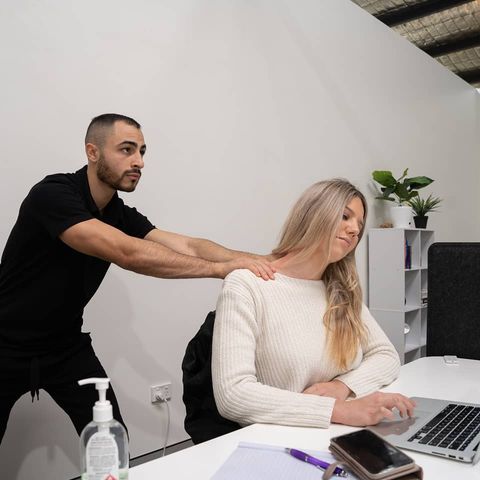
What Are the Essential Steps to Designing a RUOK?Day Massage Workshop?
Designing a RUOK?Day massage workshop involves a systematic process that ensures relevance, engagement and measurable impact. This approach enhances employee well-being by aligning activities with organisational goals and participant needs.
- Identify employee wellness needs and goals.
- Define clear workshop objectives and success metrics.
- Select qualified wellness professionals and collaboration models.
- Choose engaging massage and complementary wellness formats.
- Plan logistics for on-site and virtual delivery.
- Integrate conversation starters to encourage mental health dialogue.
- Measure outcomes and gather participant feedback.
Following these steps produces a cohesive workshop that simultaneously addresses physical relaxation and emotional connection.
How Do You Identify Employee Wellness Needs and Goals?
Employee wellness needs and goals emerge from targeted assessment methods that reveal stressors and priorities. Conduct anonymous surveys to measure current stress levels and well-being concerns. Host focus groups to gather qualitative insights on preferred wellness formats. Use pulse polls before RUOK?Day to adapt workshop content so it resonates with true employee challenges and aspirations.
What Workshop Formats and Activities Should You Include?
Choosing formats and activities that reflect diverse wellness needs promotes broad engagement and fosters holistic support.
| Format | Feature | Benefit |
|---|---|---|
| Chair Massage | Seated pressure-point techniques | Quick stress relief at the desk |
| Virtual Self-Massage Demo | Live video tutorials | Accessible for remote teams |
| Guided Meditation Break | Breathing and visualisation | Mental calm and focus |
By blending hands-on massage with guided self-care and mindfulness, workshops deliver layered benefits that support both physical and emotional wellness.
How Do You Plan Logistics for On-Site and Virtual Workshops?
Logistical planning ensures seamless delivery across both physical and digital environments. Reserve appropriate common areas, arrange tables or chairs, and schedule sessions to minimise workflow disruption. For virtual workshops, select stable video platforms, ship necessary self-massage kits in advance and test audio-visual setups. Clear scheduling and facilitator briefings guarantee a professional and stress-free experience.
How Can You Integrate Conversation Starters to Encourage Mental Health Dialogue?
Integrating conversation starters invites open dialogue and supports RUOK?Day’s core mission. Use prompt cards with questions such as “What support has helped you stay resilient?” or “When did you feel most connected today?” Place prompts at massage stations and virtual breakout rooms. Facilitators can guide small-group discussions that reinforce emotional awareness and mutual support.
How Do You Measure the Success and ROI of RUOK?Day Massage Workshops?
Measuring success and ROI requires defining relevant KPIs, collecting data, and analysing outcomes to demonstrate value and inform future programming. This process reinforces accountability and underlines the strategic importance of wellness investments.
- Establish baseline well-being metrics before the workshop.
- Track participation rates, session attendance, and engagement levels.
- Measure changes in stress scores and satisfaction ratings through post-event surveys.
- Calculate ROI by comparing program costs against productivity gains and absenteeism reductions.
These measures provide clear evidence of impact and guide continuous improvement.
What Key Performance Indicators (KPIs) Track Employee Well-being and Engagement?
Key performance indicators for massage workshops capture both quantitative and qualitative shifts in well-being and engagement:
- Stress Level Reduction – Changes in self-reported stress scales.
- Program Satisfaction – Ratings of workshop quality and relevance.
- Participation Rate – Percentage of employees who attend sessions.
- Absenteeism Change – Variations in sick days pre- and post-workshop.
- Repeat Requests – Volume of future wellness service bookings.
Monitoring these KPIs demonstrates the program’s value and supports further investment.
How Can Case Studies Demonstrate the Benefits of Corporate Massage Programs?
Case studies illustrate real-world outcomes by showcasing before-and-after metrics and employee testimonials. For example, a technology firm reduced reported stress by 15 percent following a series of RUOK?Day massage workshops, while a finance team saw a 10 percent uptick in focus and task completion. These narratives build credibility and provide persuasive proof of concept.
What Tools Help Monitor Workshop Impact and Employee Feedback?
A variety of tools streamline data collection and analysis for wellness programs:
- Survey Platforms – Digital questionnaires for pre- and post-event feedback.
- Analytics Dashboards – Visualise participation, satisfaction, and stress metrics in real time.
- Wellness Apps and Wearables – Track biometric indicators such as heart rate variability.
- Collaboration Tools – Integrate feedback channels within existing communication platforms.
Using these solutions delivers actionable insights and supports data-driven decision-making.
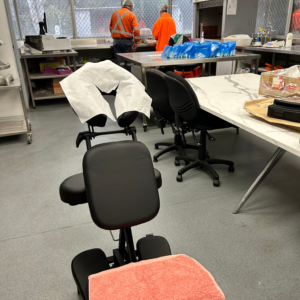
How Can RUOK?Day Massage Workshops Be Customised for Different Workplace Challenges?
Customising RUOK?Day massage workshops ensures relevance across remote, industry-specific and diverse workforce contexts. Tailoring content and delivery methods amplifies impact by addressing unique stressors and cultural dynamics.
- Adapt workshop length and format for remote teams via virtual guides and mailed self-care kits.
- Develop sector-specific modules that address healthcare shift fatigue or tech crunch stress.
- Embed inclusive practices by offering multilingual materials and accessible self-massage techniques.
Targeted customisation reinforces the workshop’s resonance and effectiveness.
How Do You Address Remote Work Stress with Virtual Massage and Wellness Sessions?
Virtual massage and wellness sessions counter remote work stress through guided self-massage tutorials, desk-based stretching routines and breathwork demonstrations. Facilitators use live video to demonstrate techniques and answer questions in breakout rooms. Participants can receive pre-shipped massage tools like massage balls and/or foam rollers which enable interactive, hands-on engagement and build a sense of community across distances.
What Industry-Specific Wellness Needs Can Massage Workshops Target?
Different industries face distinct stress patterns that require focused interventions:
- Technology – Intense screen time demands ergonomic chair massage and eye-strain relief.
- Healthcare – Night shift fatigue benefits from deep-tissue techniques and energy-boosting micro-breaks.
- Finance – High-pressure environments gain from tension-relieving shoulder and neck massage.
Customising techniques and messaging for each sector maximises relevance and participation.
How Do You Adapt Workshops for Employee Diversity and Inclusion?
Inclusive workshops accommodate cultural preferences and accessibility requirements by offering adjustable pressure options, multilingual facilitator cues and respect for personal boundaries. Facilitators receive cultural competency training, and organisers provide private spaces for those who prefer individual sessions. This approach ensures equitable participation and fosters an environment of respect and belonging.
What Are Best Practices for Integrating RUOK?Day Chair Massages into Corporate Wellness Programs?
Integrating RUOK?Day chair massages into broader wellness programs creates synergy and maintains momentum beyond the event. Align scheduling with existing health fairs, combine messaging with mental health seminars and co-promote across employee channels. Coordination with benefits teams and leadership endorsement underscores organisational commitment to sustained well-being.
How Do You Seamlessly Combine On-Site Massage with Existing Wellness Initiatives?
Seamless integration involves co-planning massage workshops alongside fitness classes, nutrition seminars and mental health training. Jointly schedule events to create thematic months such as “Mindful March” or “Stress-Free September” and cross-promote across wellness newsletters. Shared branding and consistent communication reinforce a cohesive employee experience.
How Do You Sustain Mental Health Awareness Beyond RUOK?Day?
Sustaining mental health awareness involves embedding ongoing practices such as monthly massage micro-breaks, establishing peer support champions and providing digital resources on stress management. Incorporate short wellness segments into regular team meetings and offer quarterly pulse surveys to maintain momentum. This continuous engagement cultivates a lasting culture of care and resilience.
Partnering with wellness professionals to design RUOK?Day massage workshops empowers organisations to reduce stress, foster open dialogue and demonstrate genuine care for employee mental health. By following a structured design process, selecting qualified therapists, customising formats and measuring impact, businesses can achieve measurable well-being
